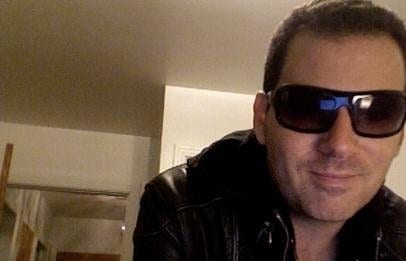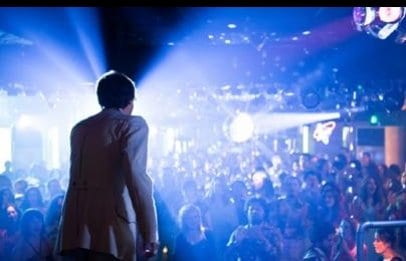
Mambo Italiano playwright and Funkytown screenwriter Steve Galluccio. Credit: Courtesy Steve Galluccio
The Montreal of the 1970s is really a city of broken dreams, dreams that had their roots in the cosmopolitan explosion of Expo 67, the most successful World’s Fair of the 20th century, and the 1969 inaugural season of Nos Amours, the Montreal Expos.
Then came the FLQ and the October Crisis; the billion-dollar Olympics that Montreal’s then-mayor Jean Drapeau infamously claimed couldn’t have a deficit any more than a man can have a baby; increased pressure by police on gay businesses as bathhouses and bars were raided. There was the election of the Parti Québécois in 1976 – which shattered yet more dreams and fuelled the anglophone exodus – and four years later, the failed referendum of 1980, which in turn crushed the dreams of Quebec separatists.
Mirabel Airport – built where it was because politicians and urban planners anticipated that Montreal would triple in size to become one of the world’s great metropolises – became a symbol of everything that had gone wrong in Montreal.
So disco music became a salvation of sorts for Montrealers and discotheques their new cathedrals. As The Canadian Press reported in 1977, “French-English tiffs in the discos are less common because excess energies and frustrations are usually funnelled into dancing, says a bartender at the Lime Light.” Much like nightclubs were the salvation of Montrealers decades earlier when Montreal was second to New York on the vaudeville circuit. Then, during Prohibition and the jazz heyday Montreal was North America’s premier destination for the thirsty. Entertainers and racketeers followed, and, as burlesque superstar Lili St Cyr once noted, “Every night in Montreal was like New Year’s Eve in New York!”
By the time the 1970s rolled around, Montreal had the most dynamic disco scene in North America after NYC. As Harry Wayne Casey (aka KC of KC and the Sunshine Band) told Montreal’s Hour newspaper in 2003, “Disco [in the wake of Watergate and Vietnam] was feel-good music that delivered on the promises of the 1960s.”
Funkytown’s script is half-French/half-English to reflect the city’s dual European/American nature. And the epicentre of Montreal’s disco scene – which cranked out many international disco stars like Gino Soccio and France Joli – was that city’s famed Lime Light disco on Stanley St (above where the Chez Paree strip joint stands today).
It is a mixed gay-and-straight scene recreated in the new feature film Funkytown, which opened to mostly rave reviews in Quebec in January and is slated to open in cinemas in the rest of Canada on March 4. While Patrick Huard (Bon Cop, Bad Cop) heads a terrific cast in this $8-million production – which revolves around a downtown nightclub called – ahem – The Starlight – Montreal’s then-disco scene is the real star of the film.
“When [Funkytown executive producer] Simon Trottier wanted to do a movie about the disco era in Montreal, he called me up in 2005 to write the script,” says Montreal playwright and screenwriter Steve Galluccio, whose hit play and film Mambo Italiano is being adapted into a Broadway musical by NYC producers Jean Cheever and Tom Polum for the 2012/2013 season.
Funkytown echoes The Last Days of Disco. Gallucio’s eight-character, gay-and-straight multi-plotline story includes two movers-and-shakers (Bastien Lavallee, played by Huard, and Jonathan Aaronson, portrayed by Paul Doucet) loosely based on two real-life iconic Montreal celebrities from the disco era, Montreal radio and TV personalities Alain Montpetit and the flamboyantly gay Douglas (Coco) Leopold.
“You can’t write about disco in Montreal without writing about Leopold and Montpetit,” says Galluccio. “We did a lot of research, and people have such vivid memories of the place that it wasn’t difficult to piece together. Every detail, every corner, how you felt when you [entered and] walked up the stairs. But this film is not a doc about the Lime Light – it is a work of fiction.”
“Our film is about an era when Montrealers were preoccupied with language,” says Funkytown director Daniel Roby. “We made this a bilingual film, just like Montreal. Ironically, when [Montreal filmmaker] Jacob Tierney said [last summer] that we [Quebecers] don’t make films about Quebec’s cultural communities, here we were making Funkytown! Our one film is not the answer, but we did it.”
Funkytown may capture the mood of the era, but legendary Montreal DJ Robert Ouimet, house DJ at the Lime Light from 1973 to 1981, remembers the real deal. “The place really was better than Studio 54, and that’s [mostly] because it was a fun place for everybody – men, women, black, white, straight and gay,” says Ouimet. “A lot of international stars also [partied] or performed at the Lime Light. I saw Alice Cooper. Grace Jones used to come often. The Ritchie Family and Gloria Gaynor played there; so did James Brown [for five consecutive nights in 1977]. I hung out with David Bowie and Iggy Pop there one night.”
While the homophobic Disco Sucks movement claimed discos from coast-to-coast, dance music never really went out of style in Montreal. But in Funkytown, Montreal’s 1970s disco scene comes to its inevitable end with the onslaught of AIDS and drugs.
The real-life Douglas Leopold died of AIDS in 1993 at the age of 49 after moving to Hollywood to become advertising manager at Universal Studios. As for Alain Montpetit, in 2002 NYC police concluded he had murdered 24-year-old Montreal model Marie-Josée St-Antoine in 1982. Montpetit died of a drug overdose in a Washington, DC, hotel room in 1987 at the age of 36.
Just like their hometown of Montreal, their dreams were extinguished with the end of disco.


 Why you can trust Xtra
Why you can trust Xtra


